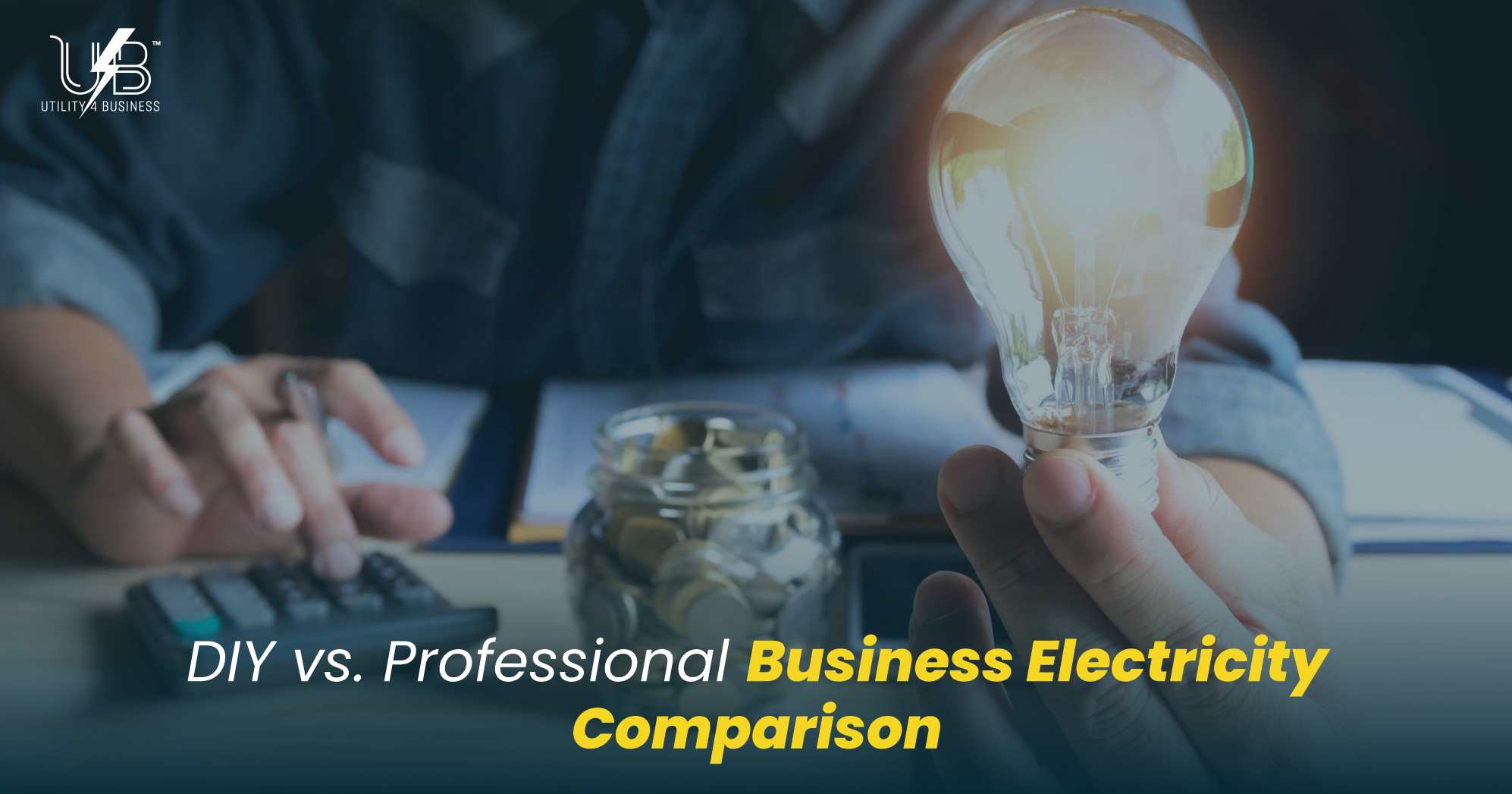Interpreting Results in Business Electricity Comparison
Business Electricity Comparison Made Simple and Clear

Quotes land in the inbox quickly. The numbers look neat at first glance. Then the details start to raise questions. One unit rate seems lower, but the standing charge is higher. One offer claims to be green, yet the paperwork is unclear. Another looks cheap now, but the term runs long. This is where strong interpretation turns a pile of prices into a clear decision. The goal is simple: read every quote on the same footing, understand what moves the final bill, and choose a contract that supports the way a business uses power. That is the heart of a good business electricity comparison.
There is also a key difference from the domestic market. The household price cap does not apply to businesses. Suppliers price by usage pattern, meter type, risk, region, and contract start dates. Quotes change fast. Two similar rates can lead to very different annual costs once all charges are counted. Treat the result screen as a starting point, then dig into the parts that shape the real spend.
What a business electricity quote actually includes
Start with the unit rate. This is the pence per kWh charge and sits at the centre of every comparison business electricity result. It is tempting to let the lowest unit rate win. Resist that urge. The unit rate matters most when usage is high and steady. For low or variable usage, a higher standing charge can wipe out the benefit of a lower unit rate. Anchor the review in the way power is used across the year, not only in a single headline number.
The standing charge is the daily fixed amount. It applies even when usage is low. In recent years, more network costs have moved into fixed elements, so the standing charge often drives a large share of the bill for microbusinesses and small sites. If the site is open part-time, a high standing charge will bite. If the site runs long hours, the unit rate tends to dominate. A fair business energy comparison weighs both in the context of actual consumption.
Build a like-for-like view before choosing
Normalise annual consumption first. Use the same Estimated Annual Consumption across every quote. This anchors the maths. If last year was unusual, use a sensible average from bills or smart data. Then hold the contract start date and the term length steady. A June start can price differently from a December start. A one-year term can sit above a three-year term in rate but carry less market risk. Lock these details so the business electricity comparison looks at like for like.
Decide the treatment of non-commodity charges up front. If budget certainty is essential, favour a fully fixed structure. If the site is larger, has half-hourly data, and can handle some price movement, pass-through may unlock value. Once this call is made, compare only quotes that match it. Mixing structures muddies the result.
The small print that moves the price
Out-of-contract rates can be much higher than contracted rates. Always note the end date and the fallback terms. A good result screen will flag this and set reminders well in advance. Renewal planning is part of a smart business electricity comparison. Letting a deal lapse can undo months of careful cost control.
Termination windows and microbusiness protections also matter. These rules limit barriers to switching at the end of a term. They simplify the renewal process and can remove the need for long notice periods. When reading quotes, confirm whether the site counts as a microbusiness and how those rights apply. The goal is to avoid any dead zone that pushes the account onto deemed rates.
Make sense of the results for different business profiles
Low-usage sites, such as small retail units or clinics, live with the standing charge more than the unit rate. When usage is light or seasonal, a high daily charge can outweigh a lower p/kWh figure. The right move is to model the annual bill at the expected usage and again at a modest increase and decrease. This shows how sensitive the spend is to each lever. A focused business energy comparison then becomes a budget choice, not a gamble.
Medium and high-usage sites focus more on the unit rate and on efficiency. For these, a pass-through can be viable if there is the appetite to manage risk. Half-hourly data gives a clear view of load shape. Load shifting, demand management, and capacity reviews can lower costs further. A strong compare business electricity prices workflow weighs the energy strategy alongside the headline price.
Quick calculation checks that protect the budget
A simple formula can act as a backstop. Annual cost before VAT equals the unit rate times annual kWh, plus the standing charge times 365, plus any fixed metering or data fees, plus capacity charges for half-hourly sites, plus any pass-through items as set out in the contract. Then add VAT and the Climate Change Levy if they apply. If a quote claims big savings but the maths does not hold under this formula, ask for a breakdown. A careful business electricity comparison uses this check on every option.
A short example helps. Suppose two one-year quotes use the same 24,000 kWh per year. Quote A shows 30.00p per kWh and a 60p standing charge. Quote B shows 29.20p per kWh and a 95p standing charge. Multiply 24,000 by the unit rate, add the standing charge times 365, and then add VAT and the levy on both. It may turn out that Quote A wins at this usage, but if usage falls by 15%, Quote B could edge ahead. The winner depends on the mix of unit rate and standing charge against real consumption.
Fixed or pass-through: choose with intent
Choose fully fixed when budget certainty matters more than chasing every last tenth of a penny. This suits stable, low to medium-usage sites and teams that prefer a simple monthly bill. Choose pass-through when the site is larger, half-hourly, and engaged in demand management. This suits a more active approach, where the team reads monthly statements and understands how network and policy costs move. The right choice is the one that matches the risk appetite and the operational capacity, not just the initial headline in a business electricity comparison table.
Red flags when reading results
Lack of clarity in the principal terms is a warning. If the quote does not say which non-commodity items are fixed and which are pass-through, ask for that in writing. If the standing charge looks far lower than the market, check for missing metering or data fees. If there is no clear plan for the end of the term, expect steep deemed rates. A careful business electricity compare process treats these gaps as risks until resolved.
Questions to settle before signing
Confirm whether the price is fully fixed or pass-through, and list the items in each bucket. Ask for the commission figure in p/kWh and as a total over the term. Check whether meter operator and data charges are included. Clarify what happens at the end of the term and what the deemed rates would be. For half-hourly sites, confirm the agreed capacity and the charge for any excess. These answers turn a glossy quote into a reliable contract.
Data to have ready for smooth comparisons
Keep the latest bills, the MPAN, the meter type and profile class, and last year’s usage to hand. Note the current contract end date and any termination rules. Keep evidence for any VAT or levy relief if it applies. With this set, a business electricity comparison moves fast and stays accurate.
Conclusion
Strong decisions come from clear numbers, not headlines. Set the same annual consumption, fix the start date and term, and read the unit rate alongside the standing charge. Check whether prices include VAT and the Climate Change Levy. Confirm if non-commodity costs sit inside a fully fixed price or pass through during the contract. For half-hourly sites, review capacity, metering, and data charges so nothing slips outside the quote. Note the end date and the out-of-contract fallback to avoid a sudden jump. When every offer sits on the same footing, a business electricity comparison stops being a guess and becomes a confident choice. Treat the result screen as a starting point, rebuild the costs line by line, and select the structure that fits the way the site uses power. Use this approach to compare business electricity in a fair, like-for-like way, and the contract will support cashflow, reduce surprises, and keep the focus on running the business not chasing bills.
Find This Article Helpful? Share It Now!
At Utility4Business, we offer top-notch customer support and business utility solutions for businesses across the UK. Consider sharing this article and helping others discover how our expertise can add value to their business success.

Read Our Latest Posts
Explore our latest blog posts and learn how Utility4Business can support your business growth with tailored utility solutions and services. Stay ahead of the curve with the latest information from industry experts and take advantage of our user-friendly comparison services to find the best business deals.


Get Connected
At Utility4Business, our team of experts can help you figure out the highest-value business utility deals that will help your business grow over time.

